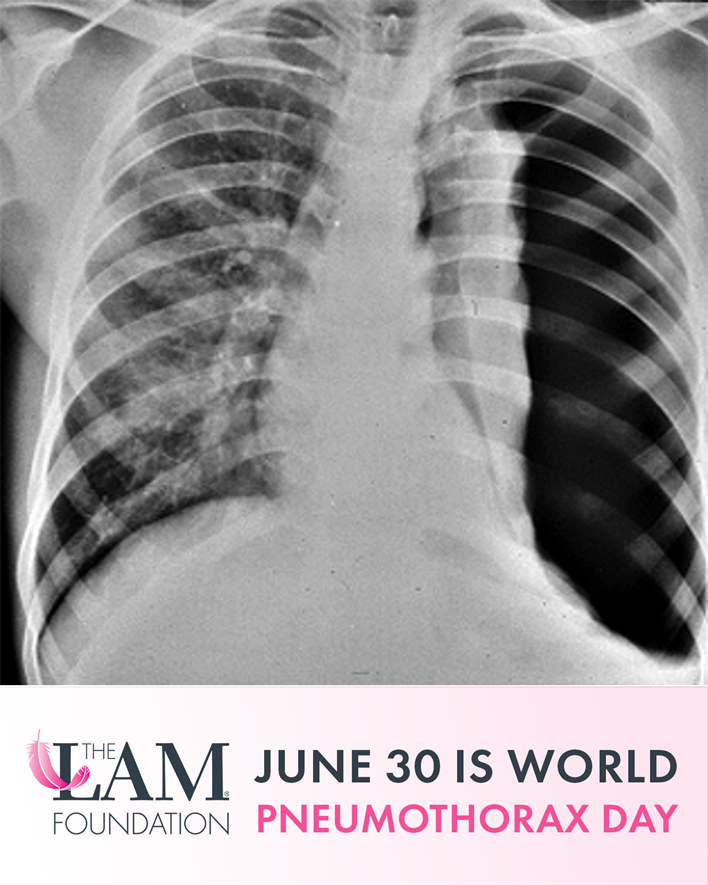World Pneumothorax Day

June 30 is World Pneumothorax Day and a great opportunity to educate yourself and your loved ones about what is often a painful and debilitating symptom of lymphangioleiomyomatosis (LAM).
A pneumothorax, or lung collapse, is a leakage of air (pneumo) from a lung into the chest cavity (thorax). This air outside the lung abruptly diminishes the negative pressure (vacuum) between the chest wall and the lung, causing the lung to deflate or collapse.
The cause of a pneumothorax in a woman with LAM is thought to be the rupture of a cyst just below the surface of the lung. Often the collapse is only partial, but you still might experience some pain and shortness of breath. If a pneumothorax occurs and collapses a sizable portion (or all) of your lung, you’ll likely have chest, back, or shoulder pain and significant difficulty breathing. Most women with LAM will experience more than one pneumothorax during the course of their disease. Because of this, pleurodesis intervention is recommended after the first occurrence of a pneumothorax. Pleurodesis is a procedure that adheres the outside of the lung to the inside of the chest cavity to prevent the lung from collapsing.
There are two goals when treating a pneumothorax. The first is the immediate removal of air from the space between the lung and the chest wall (the pleural space) so that the lung can re-expand. The second objective is the prevention of recurrent pneumothoraces. Without treatment, there is a 70% chance of a recurring pneumothorax. With treatment, the risk is reduced to about 30%. Although pleurodesis isn’t a foolproof remedy against future pneumothoraces, it generally diminishes their likelihood and the severity of future pneumothoraces and can significantly improve quality of life. LAM patients taking sirolimus should consult their physician about holding the drug 2-4 weeks after the resolution of a pneumothorax due to wound healing issues.
Patients who have experienced a recent pneumothorax should avoid air travel and consult their physician about the best time to travel.